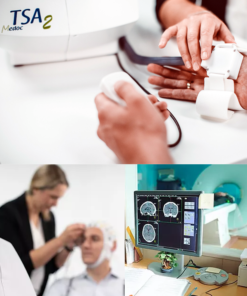The Challenge
Evoked potential (EP) is used to clinically diagnose a wide variety of central nervous system disorders. In research, it is used to study the functions of the brain. Learning and documenting evoked potentials is impossible without a pain stimulator works integrally in an EEG or imaging environment.
Scientific Background
Evoked potentials are the registration of the electrical responses of active brain cells, as detected by electrodes placed on the surface of the head at various positions. The evoked potential, unlike the waves on an EEG, is elicited by a specific stimulus applied to the visual, auditory or pain sensory receptors. EP is useful in documenting objective response to pain.
Applying Medoc’s Solutions in Studying Evoked Pain
In order to visualize a response to evoked pain, a recording EEG (Amplifier, Electrodes) and pain stimulation device must work integrally. Both systems must be connected via trigger input and the resulting EEG must be cut into segments around the stimulus and averaged.
The recorded brain waves create a visualization of the direct response, or “voltage” potential, evoked by a stimulus. PATHWAY CHEPS and the recent CHEPS for TSA2 (Contact Heat Evoked Potential Stimulator) presents the stimulus with a heated thermode sensor with a sharp slope, and sends a signal (trigger) to the EEG, connected via BNC cable, for delivering the painful stimulus. The data is then averaged, by adding all the segments together and dividing by the number of segments to receive an average.













